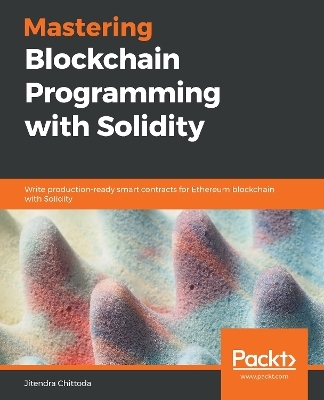
Mastering Blockchain Programming with Solidity
Packt Publishing Limited (Verlag)
978-1-83921-826-2 (ISBN)
Discover the advanced features of Solidity that will help you write high-quality code and develop secure smart contracts with the latest ERC standards
Key Features
Delve into Solidity and understand control structures, function calls, and variable scopes
Explore tools for developing, testing, and debugging your blockchain applications
Learn advanced design patterns and best practices for writing secure smart contracts
Book DescriptionSolidity is among the most popular and contract-oriented programming languages used for writing decentralized applications (DApps) on Ethereum blockchain. If you’re looking to perfect your skills in writing professional-grade smart contracts using Solidity, this book can help.
You will get started with a detailed introduction to blockchain, smart contracts, and Ethereum, while also gaining useful insights into the Solidity programming language. A dedicated section will then take you through the different Ethereum Request for Comments (ERC) standards, including ERC-20, ERC-223, and ERC-721, and demonstrate how you can choose among these standards while writing smart contracts. As you approach later chapters, you will cover the different smart contracts available for use in libraries such as OpenZeppelin. You’ll also learn to use different open source tools to test, review and improve the quality of your code and make it production-ready. Toward the end of this book, you’ll get to grips with techniques such as adding security to smart contracts, and gain insights into various security considerations.
By the end of this book, you will have the skills you need to write secure, production-ready smart contracts in Solidity from scratch for decentralized applications on Ethereum blockchain.
What you will learn
Test and debug smart contracts with Truffle, Ganache, Remix, and MetaMask
Gain insights into maintaining code quality with different tools
Get up to speed with ERC standards such as ERC-20 and ERC-721
Become adept at using design patterns while writing smart contracts
Use MultiSignature (MultiSig) wallets and improve the security of contracts
Use Oracle services to fetch information from outside the blockchain
Who this book is forThis book is for developers and data scientists who want to learn Ethereum, blockchain, and Solidity to write smart contracts and develop production-ready code. Basic knowledge of Solidity is assumed.
Jitendra Chittoda is a blockchain security engineer at ChainSecurity. His day job is to perform security audit on smart contracts and expose security vulnerabilities in Solidity and Scilla contracts. He has also developed a non-custodial, decentralized, P2P lending contracts for ETHLend. The Solidity contracts that he has developed or audited handle over $100 million worth of cryptoassets. He also served as a tech and security advisor in various ICO projects. Before finding his passion for blockchain, he coded in Java for over 11 years. He is the founder and leader of Delhi-NCR-JUG, a non-profit meetup group for Java. He holds a master's degree in computer applications and is regularly invited as a speaker at various conferences and meetups.
Table of Contents
Introduction to Blockchain
Getting Started with Solidity
Control Structures and Contracts
Learning MetaMask and Remix
Using Ganache and the Truffle Framework
Taking Advantage of Code Quality Tools
ERC20 Token Standard
ERC721 Non-Fungible Token Standard
Deep Dive into the OpenZeppelin Library
Using Multisig Wallets
Upgradable Contracts Using ZeppelinOS
Building Your Own Token
Solidity Design Patterns
Tips, Tricks, and Security Best Practices
| Erscheinungsdatum | 07.08.2019 |
|---|---|
| Verlagsort | Birmingham |
| Sprache | englisch |
| Maße | 75 x 93 mm |
| Themenwelt | Informatik ► Weitere Themen ► Hardware |
| Naturwissenschaften ► Biologie | |
| ISBN-10 | 1-83921-826-6 / 1839218266 |
| ISBN-13 | 978-1-83921-826-2 / 9781839218262 |
| Zustand | Neuware |
| Informationen gemäß Produktsicherheitsverordnung (GPSR) | |
| Haben Sie eine Frage zum Produkt? |
aus dem Bereich


